
You may have taught your students the memory jogger ‘A, E, I, O, U and sometimes Y’ to help with recall of vowel letters, but do they (and you!) know why a letter that is typically referred to as a consonant would be in a list of vowel letters? And is Y the only consonant letter that should be included in this memory jogger? In this blog, I’ll explain the difference between consonant sounds and vowel sounds and the way in which they are represented with letters.
I want students to understand the logic of our English alphabetic code as I firmly believe that understanding will improve their reading and spelling performance. They’ll only understand the logic if they are explicitly taught it. Sounds are represented by letters in an alphabetic code. Synthetic phonics instruction takes a speech-to-print approach to the teaching of reading and writing, therefore the concepts of ‘vowel’ and ‘consonant’ are most logically taught first in the context of speech, then writing.
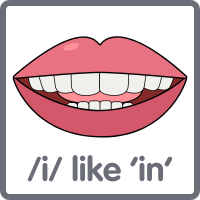
A vowel sound is made with an open mouth. There must be unobstructed air flow from the lungs to the windpipe, through the voice box and out the mouth. The tongue must not touch the teeth or lips. A vowel sound can be sustained or sung in isolation, and can be made louder or softer. The word ‘vowel’ originates from the Latin word ‘vox’, which means ‘voice’. All vowel sounds are voiced. Every syllable must contain a vowel sound in order to be heard. I tell students that ‘V stands for Vowel, Volume, and Very important’.
In most dialects of English, there are 20 vowel sounds. Each of the different vowel sounds are created by changing the position or height of the tongue, and changing the shape of the mouth. In schools, vowels are often classified as ‘short’ or ‘long’. These terms are historical labels based on the length of vowel sounds in Old English but are not really appropriate today as so-called ‘short’ vowels are no longer said more quickly than ‘long’ vowels. While this makes for an interesting linguistic factoid, the distinction won’t be helpful to children learning contemporary English! It is also not appropriate to put vowel sounds that sound the same as letter names in one classification and those that do not in another. As renowned speech pathologist and educator, Alison Clarke, says in her blog post on short and long vowels:
“The terms “short” and “long” are misleading and confusing. These vowels are not short and long versions of each other…. Instead, we can just say the sounds (“the sound ay”, “the sound oy” etc) and teach children all the main spelling patterns for each sound, systematically and explicitly,”
Phonics Hero does not classify vowels.
Pictures of how the mouth appears when a specific sound is produced make the difference between the vowel sounds visible, and can be very helpful for correct pronunciation. These illustrations from Canva are really well done. They can also help students who have auditory processing or functioning problems to identify sounds. You can see videos of mouth movements for each phoneme of the English language in the ‘Pronounce the Sounds’ section of the Phonics Hero website. The videos are also part of Step 1 ‘Get It Right’ of the ‘Teaching The Sounds’ component of Phonics Hero’s No-Prep Phonics Lessons. And because the vowel sounds are so different in different accents, you are able to choose between an English, Australian or American accent. Watch a guided tour of this section of the lesson:
A vowel sound is referred to as ‘pure’ when the mouth position does not change while it is made. Some examples are /oo/ and /ee/.
A diphthong starts with the sound quality of one vowel and ends with the sound quality of another, so it is not a pure vowel. Some examples are /oi/ and /ou/. A diphthong is sometimes called a complex or ‘gliding’ vowel sound.
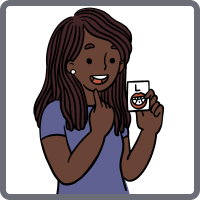
Cued articulation adds hand cues near the mouth that further explain how and where a sound is produced. This is particularly helpful if a student has a significant speech or language difficulty. Find out more about this system.
Y is in the memory jogger “A, E, I, O, U and sometimes Y” for vowel letters because, in terms of production, it is formed in a similar way to a vowel, with air unobstructed. It sounds similar to /ee/.
When we move from the sound /y/ to another vowel sound, the transition affects the sound formation, making it act like a consonant as in ‘yes’. Y is referred to as a semi-vowel because it can be a vowel or a consonant sound. Students may like to refer to it as a ‘part-time’ vowel.
When the ‘y’ is representing a vowel sound, in isolation or in the vowel teams ‘ay’, ‘ey’, ‘oy’, and the less common ‘uy’ and ‘ye’, it is acting as a vowel letter. When it is representing a consonant sound, it is acting as a consonant letter. Unfortunately, many teachers teach students to pronounce ‘y’ only as a consonant, often following it with aspiration, /yuh/. This is probably a misguided attempt to ‘simplify’ the code because the ‘y’ consistently represents the same consonant sound in initial position in a syllable but 3 different vowel sounds in other positions in a syllable.
W is also a semi-vowel and sounds similar to /oo/. Interestingly, in Norman English, the letter ‘w’ was written as two u’s back-to-back, thus the name ‘double-u’.
Like ‘y’, it acts as a vowel when in a vowel digraph – ‘ow’, ‘aw’ and ‘ew’. When ‘w’ precedes another vowel sound, the sound formation is affected, making it act like a consonant in words such as ‘went’. Because the letter /w/ only spells a vowel sound when it is part of a vowel team, it is more often a consonant letter than a vowel letter. This may be why it is often pronounced by teachers only as a consonant sound and is often incorrectly omitted in the vowel letter memory jogger.
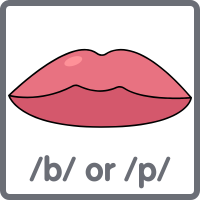
A consonant sound is a sound that is made with the airflow blocked partially or completely by some part of your mouth, e.g. the lips, teeth or tongue. For example, the sounds /b/ and /p/ are made with the lips together; the sound /k/ is made by bringing the top of the tongue up to the soft palate, and the sound /th/ is made by putting the tongue between the teeth. A consonant sound cannot be sustained or sung in isolation and cannot be controlled for volume.
A consonant needs a vowel in order to be heard. The word ‘con-son-ant’ comes from Latin, ‘con’ meaning ‘with’ and ‘son’ meaning ‘sound’. There are 24 consonant sounds in most dialects of English. Some are voiced, others unvoiced. Place your fingers at the top of your throat as you make each of these sounds. You will find that in a voiced consonant (for example, /v/) the vocal cords vibrate. In unvoiced consonants (for example /f/) they do not.
Consonant sounds require more refined articulation than vowels which is why their accurate production can be challenging for children with speech difficulties. When it comes to recording a written representation of a consonant sound, it is important that it be said as a pure sound, without the addition of an aspiration that sounds like /uh/ where /z/ becomes /zuh/, making spelling tougher.
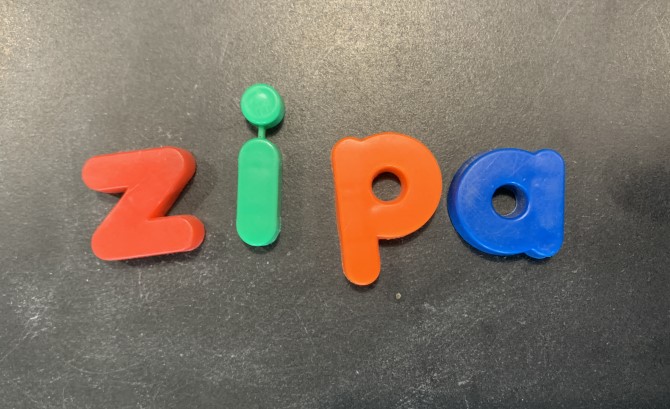 When impure sounds are used; there are negative consequences on spelling.
When impure sounds are used; there are negative consequences on spelling. The Phonics Hero website provides the correct pronunciation in video format and the games model the correct pronunciation.
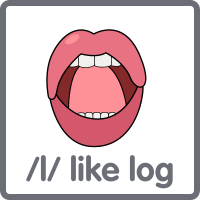
The continuant consonant sounds /l/ and /r/ are produced with less obstruction to airflow than other consonants but not total obstruction so in linguistics are referred to as ‘approximants’. The sound /l/ can form a syllable (as in ‘people’), as can /m/ (as in ‘prism’) because the preceding consonant sound is close in production. We don’t write a vowel letter in the syllable though we do make a vowel sound.

With 44 speech sounds (phonemes) in the English language, but only 26 letters (graphemes) it is sometimes necessary to use letters in combination to represent sounds. Some sounds are represented by two graphemes (a digraph), three graphemes (a trigraph) or even 4 graphemes (a quadgraph).
Vowel sounds in English can be represented by one vowel letter (a, e, i, o, u, y) or two vowel letters (for example, ai, ey, ow, ue). Vowel digraphs containing ‘y’ or ‘w’ are used in the final position in a word because English words never end in ‘i’ or ‘u’. The /y/ closes the mouth after /a/, /e/ and /i/ while a /w/ closes the mouth after /o/ and /u/.
Both vowel sounds and consonant sounds may be represented by a combination of vowel and consonant letters. Some vowel sound examples are:
The first group of letter combinations listed is referred to as ‘r-controlled vowels’. The production of the /r/ sound impacts the vowels so that they lose their usual sound. In the next two groups, one or two consonant letters are written but no consonant sound is heard. You can learn more about R-Controlled Vowels in my other blog post.
Three vowel letters are often seen in consonant sound spellings:
There are a few words that appear to be rule-breakers as regards use of vowel and consonant letters, for example ‘one’ and ‘tune’. We hear a consonant and vowel sound combination /w+uh/ and /y+oo/. Etymology can help students to understand the logic – these spellings reflect historical developments. ‘One’ was pronounced in Middle English like ‘own’, which you still hear in ‘only’. It was spelled like it sounded, with the diphthong ‘ow’. The emphasis was on the /o/ part of the diphthong. The /w/ sound was added in the late Middle Ages to reflect the /w/ part. The consonant sound in /y+oo/ apparently reflects the old French diphthong pronunciation for the ‘u’ sound. The impact of the /y/ is minimal so in some American dialects it is not pronounced, for example, the pronunciation of ‘tune’ is /toon/.
So why do we need to think about how vowels and consonants are produced and how their representations function? The reason is that understanding can improve learners’ reading and spelling accuracy. If a student is unsure whether a sound/letter is a vowel or a consonant, making that sound or seeing it made, can be helpful. Knowing what ‘voiced’ and ‘unvoiced’ mean can, for example, help the student who never knows whether to use a ‘w’ or ‘wh’ in spelling. If the vocal cords are not used and the voice is only a whisper, as in ‘where’, the consonant digraph ‘wh’ should be used. If the voice is used, as in ‘were’, the student should write ‘w’.
Students should be taught that the letters ‘y’ and ‘w’ spell consonant sounds when they are before a vowel and spell vowel sounds when they are after a vowel. In addition, they need to know that ‘y’ can spell three vowel sounds in various positions in a word. When you’re teaching students the vowel letters, I recommend teaching them an updated version of the memory jogger: “A, E, I, O, U and sometimes Y and W’’. Not only is it more accurate than the previous version but is easier to remember, as it rhymes!